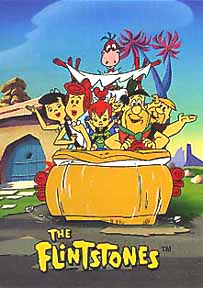
Children spend much of their free time watching television and having contact with television influences the way children perceive the world around them. The United States debates whether program content is appropriate or not and also how television influences a child’s attitude, knowledge, and behavior. Television has changed throughout the years starting in 1950s to present day.
In the 1950s, children’s shows were beneficially in bringing the family together. Most of children’s shows were broadcasted during the afternoon and evening. But during the mid-1950s programs had aired Saturday morning. This started One Saturday morning shows, which still are on today.
The 1960s started animation shows. In the 1960s they reduced costs which led to limited action animation techniques. This cleared the appeal of cartoons to children, changed scheduling of programs, and the change of Saturday morning cartoons became complete. Some popular animated shows of the 1960s were The Flinstones, The Jetsons, Bullwinkle, and Space Ghost.
The 1970s have been considered as a video mosaic in which shows incorporated a number of segments under regular shows. Some of the shows were The New Super Friends Hour or Scooby Laff-a-Lympics. These helped with shows to increase audience flow across the entire morning.
In the 1980s children’s shows were influenced by the “television revolution” as the growth of cable and VCR began to erode audiences. Cartoons remained important, but live action shows began to increase. Cable networks such as Nickelodeon and Disney, devoted mostly to children. Other cable networks such as Discovery, Learning Channel, USA, TBS, the Family Channel, and Lifetime grew in having more shows that were programmed towards children. They produced live action shows, which included game shows, puppet shows, magazine format news and variety programs, as well as live action drama adventures shows.
The Children’s Television Act was influenced in the 1990s. This was because the educational shows were joining available programming. Since the 1990s, eight of the nine Peabody Awards for children’s programs were for informational or educational programs.
As the years have passed, people can see the change and growth of children’s shows. Children’s shows have improved and have become educational as well as teaching healthy ways to live a better life.
For more information about the changes in children’s television shows, go to this website:
http://www.museum.tv/archives/etv/C/htmlC/childrenand/childrenand.htm
In the 1950s, children’s shows were beneficially in bringing the family together. Most of children’s shows were broadcasted during the afternoon and evening. But during the mid-1950s programs had aired Saturday morning. This started One Saturday morning shows, which still are on today.
The 1960s started animation shows. In the 1960s they reduced costs which led to limited action animation techniques. This cleared the appeal of cartoons to children, changed scheduling of programs, and the change of Saturday morning cartoons became complete. Some popular animated shows of the 1960s were The Flinstones, The Jetsons, Bullwinkle, and Space Ghost.
The 1970s have been considered as a video mosaic in which shows incorporated a number of segments under regular shows. Some of the shows were The New Super Friends Hour or Scooby Laff-a-Lympics. These helped with shows to increase audience flow across the entire morning.
In the 1980s children’s shows were influenced by the “television revolution” as the growth of cable and VCR began to erode audiences. Cartoons remained important, but live action shows began to increase. Cable networks such as Nickelodeon and Disney, devoted mostly to children. Other cable networks such as Discovery, Learning Channel, USA, TBS, the Family Channel, and Lifetime grew in having more shows that were programmed towards children. They produced live action shows, which included game shows, puppet shows, magazine format news and variety programs, as well as live action drama adventures shows.
The Children’s Television Act was influenced in the 1990s. This was because the educational shows were joining available programming. Since the 1990s, eight of the nine Peabody Awards for children’s programs were for informational or educational programs.
As the years have passed, people can see the change and growth of children’s shows. Children’s shows have improved and have become educational as well as teaching healthy ways to live a better life.
For more information about the changes in children’s television shows, go to this website:
http://www.museum.tv/archives/etv/C/htmlC/childrenand/childrenand.htm


